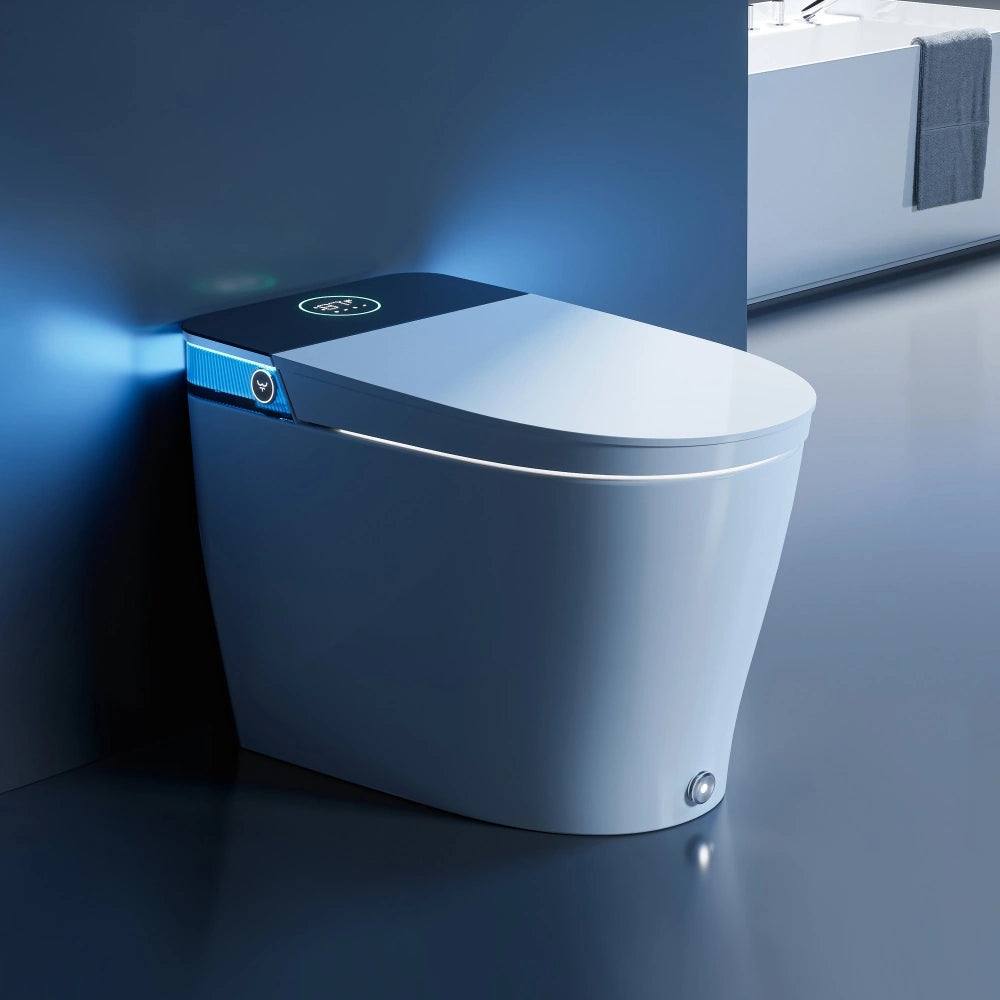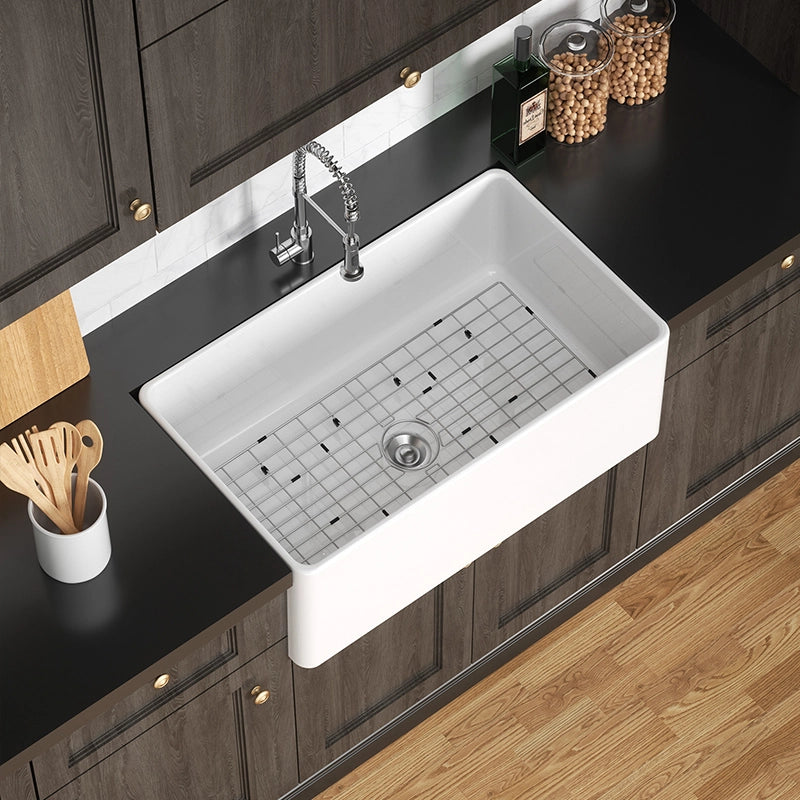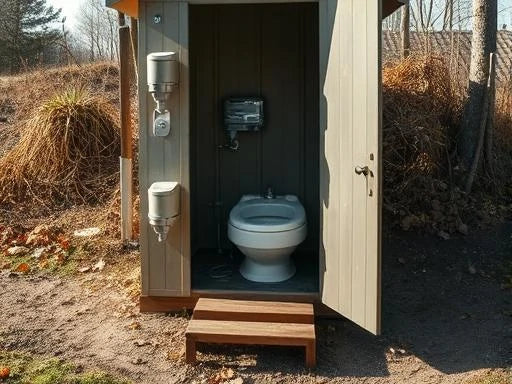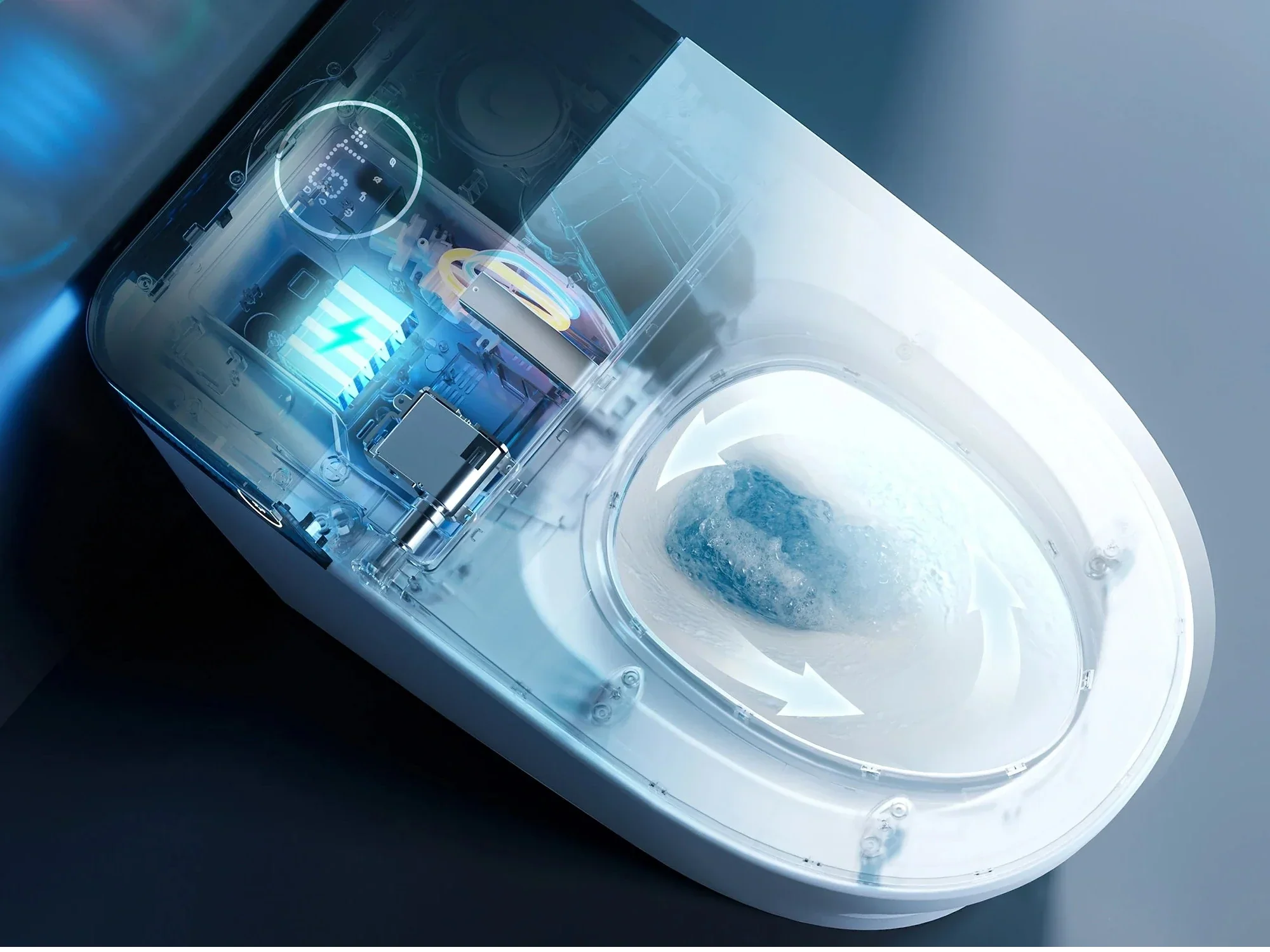Dealing with a running toilet can be quite bothersome and uneconomical, for homeowners. In addition, to the water wastage issue, it poses an increase in your water bill. If you find yourself dealing with a running toilet problem worry not—there are effective solutions available to get your toilet back, in proper working order. Here’s a comprehensive guide detailing how to fix a toilet that keeps running and resolve the issue of a running toilet effectively.

Understanding the Cause of a Running Toilet
Flapper Issues
The flapper, in the toilet, is essential as it is located at the base of the tank and opens up to allow water to flow when you flush it down the drainpipe. If it malfunctions or deteriorates over time due to wear and tear or accumulated dirt your toilet may continuously run water without stoppage. This issue arises when the flapper ages or distorts preventing it from sealing either due to accumulation, on its surface or deformation of its shape. Knowing how to fix a toilet that keeps running usually begins by checking the flapper since it's often the main culprit, in such situations.
Fill Valve Problems
The fill valve is, in charge of filling up the tank with water after every flush cycle is completed successfully. If the fill valve is not working properly, the water level in the tank can become too high. The valve may fail to close leading to a situation where the toilet runs continuously without interruption. To troubleshoot and address how to fix a toilet that keeps running, focus on checking and potentially fixing any problems associated with the fill valve as it is a culprit, in situations.
Float Issues
Issues, with the water level, in a toilet can arise if the float is positioned high or is damaged in some way. This modest component regulates when the fill valve ceases to add water to the tank. If it is not adjusted properly the water will continue to flow or fill excessively. To effectively address how to fix a toilet that keeps running, it's crucial to confirm that the float is functioning optimally.
Overflow Tube Problems
Once you've dealt with float-related issues in your toilet system troubleshooting process the next task is to look into problems, with the overflow tube mechanism. This component plays a role in preventing water from overflowing by guiding water into the bowl. When the height of this tube is incorrect it can lead to water flow as it fails to reach the designated fill line or fails to prevent an overflow. Addressing how to fix a toilet that keeps running is essential, for avoiding water wastage.
Step-by-Step Guide to Fixing a Running Toilet
Fixing a flushing toilet is simpler than one may anticipate. Gather some essential tools and exercise patience.
Inspect the Flapper
After going through the steps on how to fix a toilet that keeps running, now let's focus on the flapper. This part is crucial for toilet repair. Here's how you inspect it:
- Turn off the water supply to your toilet. You'll find the valve near the floor, behind or beside the toilet.
- Remove the tank lid carefully to avoid damage. Flush your toilet to drain water from the tank.
- Look inside the tank for the flapper. It's usually at the bottom of the tank. Check if the flapper is dirty or has any build-up on it. Clean it off if needed.
- See if there are any cracks or wear on the flapper. Push down on the flapper gently to see if it seals well against the flush valve opening.
- If it doesn't seal properly, adjust its chain length; sometimes, it's too tight or too loose. Replace the flapper if adjusting doesn't help or if you notice significant damage.
- After replacing or adjusting, turn back on your water supply and check for running water problems again. Make sure everything else in your tank looks okay and no other parts are broken.
If your toilet keeps running after checking the flapper, you might need to proceed to the next steps in learning how to fix a toilet that keeps running.
Adjust the Fill Valve
After checking the flapper, the next step is fixing the fill valve if your toilet keeps running. This part controls the water flow into your toilet tank. Here's how to adjust it:
- First, shut off the water supply to your toilet. You'll find a valve near the floor behind or beside the toilet.
- Then, flush your toilet to empty the tank.
- Look for a screw on top of the fill valve. This screw adjusts the water level. Use a flathead screwdriver to turn this screw. If you turn it clockwise, you reduce the water flow. Turning it counterclockwise will increase it. Watch inside the tank as you adjust. Stop when water stops coming in just below the overflow tube.
- Last, turn the water supply back on and flush to test. Make sure everything works right now and there's no more running!
If the water continues to run, it's essential to learn how to fix a toilet that keeps running by checking other potential causes like the float or overflow tube.
Fix the Float
After adjusting the fill valve, the next step is fixing the float. This part keeps the water level in check. Here's how to tackle float issues:
- Turn off the water supply to your toilet. Find the valve behind or near the toilet and turn it clockwise. Flush your toilet to drain out most of the water from the tank.
- Check if the float ball is leaking or not floating well. If it's damaged, you need a new one. Unscrew the old float ball from its arm using your hand or pliers. Sometimes, you just have to pop it off.
- Attach a new float ball. Screw it onto the arm or snap it back into place, depending on your toilet model. Adjust the float level by bending the arm up for more water or down for less.
- Turn back on the water supply and let the tank fill up. Watch how high the water rises. It should stop about an inch below the overflow tube's top edge. If water goes too high or not high enough, adjust again by bending the arm until it's right.
Water should now stop running continuously after these adjustments. By fixing the float, you can often solve how to fix a toilet that keeps running.
Address the Overflow Tube
The overflow tube in your toilet is key to preventing water from spilling over the tank. If your toilet keeps running, this part might be the issue. Here's how to fix it:
- Check the water level first. Make sure it's not above the overflow tube.
- Inspect the overflow tube for cracks or damage. Replace it if you find any.
- Adjust the float to change the water level. It should stop filling about an inch below the top of the overflow tube.
- Clean the overflow tube. Sometimes, dirt blocks it and causes problems. Confirm that the refill hose is attached properly. It should be clipped to the overflow tube but not pushed too far into it.
Preventative Maintenance Tips
Regular Checks to Prevent Running Toilet Issues
Keeping your toilet in good shape stops it from running non-stop. Regular checks can save you time and money by catching problems early. Here's how to do it:
Look at the flapper once a month. If it looks old or worn out, replace it to avoid leaks.
Test the flush valve for leaks. Drop food coloring in the tank and wait 15 minutes. If color shows up in the bowl, you have a leak.
Make sure to inspect the fill valve every month to see if there are any signs of wear or damage present, on it. Ensure that the float ball moves freely without rubbing against anything and check the overflow tube for any cracks or breakages that may have occurred.
Watch out for any noises when the toilet is idle such, as hissing or water trickling sounds. Use a wrench to tighten any bolts on the toilet base without tightening them much. Eliminate mineral buildup inside the tank using vinegar to ensure the functioning of the parts. Adjust the chain length as required to ensure it's neither too tight nor too loose. Replace components, like washers and gaskets annually to avoid leaks from forming. To address how a fix toilet that keeps running it's crucial to conduct inspections and upkeep to detect minor concerns early on before they escalate into major issues.
Ensuring to conduct these inspections assists in maintaining the functioning of your toilet and prevents running issues from occurring in the first place.
Best Practices for Toilet Maintenance
After learning about regular checks to stop a running toilet, let's talk about keeping it in good shape. Taking care of your toilet means fewer repairs down the line. Clean your toilet often with gentle cleaners. Avoid harsh chemicals that can hurt parts inside the tank.
Check the parts inside once in a while. Make sure nothing is broken or worn out. Replace parts like flappers and fill valves before they break. This keeps everything working well and saves water too. With proper maintenance, you'll know exactly how to fix a toilet that keeps running if it happens again.

Why You Should Consider Upgrading to a Modern Toilet
Benefits of Upgrading to A New Water-efficient toilet
Upgrading to a new water-efficient toilet saves a lot of water and money. These toilets use less than 1.28 gallons per flush. This is much lower than old toilets that can use up to 7 gallons per flush.By switching to a modern model, you reduce the likelihood of problems like running water, which means fewer instances of wondering how to fix a toilet that keeps running.
So, you could save thousands of gallons of water every year with a new toilet. Plus, this helps the environment by using less water.
Newer models also come with better features for hygiene and cleaning. They often include dual flush options, letting you choose how much water to use each time. This makes maintenance easier and keeps your bathroom cleaner with less effort.
The Importance of Modern Features
After looking at the benefits of a new water-efficient toilet, it's clear modern features play a big role. Today's toilets save more water. This means less stress on your wallet and the planet.
Newer toilets also feature improved hygiene technology such, as touch flushing systems to reduce the spread of germs effectively and efficiently prevent clogs before they occur. Providing users with peace of mind in knowing they are conserving water without compromising on performance or cleanliness each day.
Enhance Water Conservation and Hygiene
Upgrading to a modern toilet can save a lot of water. Old toilets use up to 7 gallons per flush, but new ones only use about 1.28 gallons. Think about the difference that makes over time! It's not just good for your wallet; it's great for the planet too.
With less water running through pipes, there's also less chance for leaks and breaks. This means cleaner water going in and out of your house.
Modern toilets come with features that make them clean better too. They have special coatings and powerful flushing systems that help keep things tidy without extra scrubbing. Plus, they're designed to stop germs from spreading around your bathroom.
By replacing a toilet, in your home you can enhance cleanliness and conservation by significantly reducing water usage.
Smart Toilets for Long-Term Solutions
HOROW smart toilets provide benefits in dealing with concerns such as a toilet that won't stop running. To start with the toilets from this brand are packed with cutting edge water saving capabilities that help to minimize water wastage and stop ongoing running due to water levels. By having control, over water flow and a thought out design HOROW smart toilets make sure that the tank adjusts the water level automatically after every flush. Preventing overflow and reducing typical water flow problems.
Moreover, HOROW smart toilets come equipped with self-cleaning capabilities and advanced sensor technology to enhance hygiene standards and minimize the risk of issues of wear and tear over time. The components of the toilet such, as the float ball assembly fill valve mechanism and overflow tube are crafted from grade materials leading to reduced maintenance expenses. The automated adjustment system guarantees water flow management thereby simplifying troubleshooting for users dealing with concerns, like how to fix a toilet that keeps running.
HOROW's Advanced Smart Toilet Models
HOROW T05

The HOROW T05 bidet toilet combo provides benefits, in addressing concerns such, as how to fix a toilet that keeps running that you may encounter with traditional toilets. The T05 incorporates cutting-edge technology that aids in averting water wastage and guarantees functioning to decrease the likelihood of water running problems occurring. The integrated smart system regulates water levels. Flow with precision to lower the possibility of overflowing or constant water flow.
Moreover, the T05 is equipped with parts such, as the fill valve and float that are crafted to deliver lasting durability. These premium components reduce the chances of breakdown simplifying the prevention of an issue found in less sophisticated toilets. The persistent running problem.
HOROW T37

Advanced HOROW T37 smart toilet comes equipped with a bidet seat that offers advantages in addressing toilet concerns, like how to fix a toilet that keeps running. Thanks to its water control system and automatic adjustments to water flow and tank refill rates it effectively operates while preventing problems such as overfilling or water wastage. This state of the art functionality plays a role, in minimizing the occurrence of toilet issues linked to ongoing water flow.
Furthermore, the T37 features high quality components such, as the fill valve and float system designed for lasting performance. This helps reduce maintenance requirements and makes it easier to maintain water levels for a reliable toilet operation.
HOROW T38

The HOROW T38 bidet toilet combination provides benefits, in solving problems like "how to fix a toilet that keeps running." With its sophisticated water management system, in place to control water levels. Flow accurately and reduce the likelihood of running water issues effectively handled by the T38s smart design adjusts water flow as needed to prevent overflowing and minimize water wastage.
The T38 not only helps save on water but also boasts top-notch parts, like the fill valve and float system for lasting durability and reliability over time. These components simplify the upkeep of fluid levels. Lessen the need for constant fixes commonly seen in older toilet models, with running issues.
HOROW T38P

The cutting-edge water management system of the HOROW T38P model features a tank that adapts water levels automatically to prevent spills and reduces the chances of water running continuously. Its sophisticated design guarantees functioning. It helps cut down on water wastage making it a dependable option, for households dealing with typical toilet issues.
Furthermore the T38P's adherence, to ADA regulations and robust components guarantee an enduring operation. The blend of premium materials and careful engineering assists, in preserving water flow simplifying the prevention of problems linked to leaky toilets often seen in older versions.
FAQ
1. What causes a toilet to keep running?
When a toilet runs constantly it's usually due to problems, with the fill valve or flapper. These components might be worn out not adjusted or damaged causing water to flow into the bowl nonstop.
2. How can I fix a running toilet on my own?
Firstly, identify the problem - is it the fill valve or the flapper? If it's the fill valve, you might need to adjust its height or replace it if it's old and worn out. For a faulty flapper, simply replacing it usually solves the issue. But remember to turn off your water supply before starting!
3. Do I always need a plumber for fixing a running toilet?
Not necessarily! Many times, fixing a running toilet involves simple adjustments or part replacements that you can do yourself. However, if you're unsure about any step in the process or if problems persist after your attempts at repair - calling in professional help is advisable.
4. Are there any preventative measures I could take to avoid having a constantly running toilet?
Yes. Absolutely important to stay up-to-date with maintenance checks for your toilet system components, such as the fill valve and flapper to catch any signs of wear and tear. Moreover, it's worth thinking about upgrading toilets since they often encounter frequent problems due, to their outdated parts.








Leave a comment
This site is protected by hCaptcha and the hCaptcha Privacy Policy and Terms of Service apply.